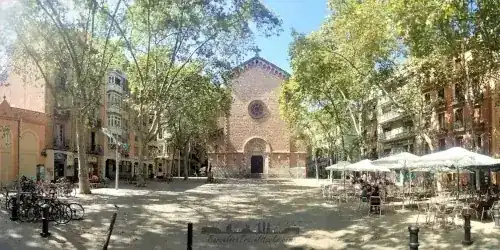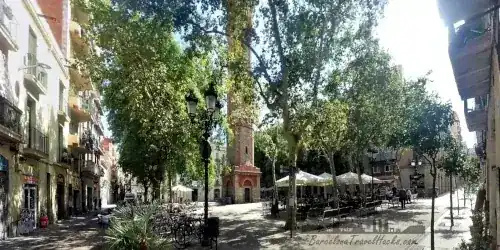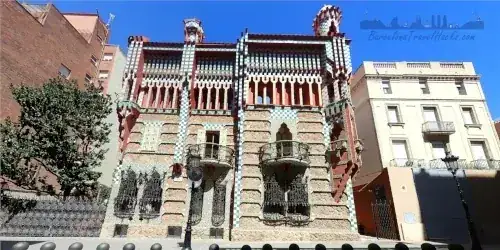Warning: Undefined array key "HTTP_ACCEPT_LANGUAGE" in /home/barcjkkl/public_html/App/Config/MySQL/language.php on line 32
Deprecated: explode(): Passing null to parameter #2 ($string) of type string is deprecated in /home/barcjkkl/public_html/App/Config/MySQL/language.php on line 36
Pl. Diamant Refugi Antiaeri - Gràcia air raid shelter
One of only two surviving underground air raid shelters from the Spanish Civil War. Located in the Gràcia Neighbourhood. Guided visits on Sunday's
About Pl. Diamant Refugi Antiaeri - Gràcia air raid shelter
During the Spanish Civil War, Barcelona constructed over 1400 underground air raid shelters to protect the citizens of Barcelona from the arial bombardment campaign carried out by the Italian Air Force at the request of General Francisco Franco. Today Only two of these shelters survive and are open to the general public for visits. Both offer guided tours.
History of the Plaça del Diament Refugi Antiaeri
In 1992, during some civil works, the anti-aerial bombardment bunker, refugi 0232, was discovered underneath the sub-soil of Plaça del Diament in Gràcia. It was constructed to a depth of 12 metres below surface to provide shelter for 200 residents of Gracia during the aerial bombardment of the civil war.
The shelter has a total of 69m in length of tunnels with the tunnel width being 1.1 metres wide by 2 metres high and a total area of 75.90 square metres. the air raid shelter has two ventilation shafts, an infirmary and electrical installation. Plans reveal proposals to increase the tunnels into surrounding streets to link up with other shelters in the Gracia neighbourhood.
The aerial bombardment was principally performed by the Italian air force at the request of General Franco to try and destroy the industrial factories of Barcelona. This shelter is one of 90 that formed the civil defence of Gràcia. Barcelona had some 1400 Shelters to protect the residents from Arial and sometimes naval bombardment. Noteworthy is that Barcelona was the first city in history to suffer from systematic aerial bombardment, This is before London and other UK cities during World War Two.
The shelter was built not by the Catalan Government but by a local committee of residents. Later, the Catalan Government published guidelines and provided technical support so that communities/committee's of residents could build shelters.
Image Gallery for Image Gallery For Pl. Diamant Refugi Antiaeri - Gràcia air raid shelter
Click on any of the 11 images to open full screen gallery player
Visiting Pl. Diamant Refugi Antiaeri - Gràcia air raid shelter
Today this shelter is only one of two that survive and are open to the public and the historic workshop (Associacio Taller d'Historia de Gràcia) offers guided visits.
The guide for the shelter speaks Spanish, Catalan and English and is very knowledgeable and helpful. The language offered for the tour is rotated depending the week of the month. Consult the schedule on the website.
The meeting point for the visits is Plaça del Diament net to the entrance steps of the underground air raid shelter. Book your visit in advance as places are limited. The guided tour lasts approximately 45 minutes.
- 1st, 3rd, 4th and 5th Sunday of the month: Catalan language visits at 11.00h
- 2nd Sunday of month: Spanish language visits & English if advised beforehand at 11.00h.
Plaça del Diament Refugi Antiaeri Guided Visit Times
What to take with you for What to take with you for Pl. Diamant Refugi Antiaeri - Gràcia air raid shelter
The Gràcia civil war air-raid shelter is a sub surface bunker below Plaça del Diament and is only accessible by a narrow spiralling staircase.
You must not be dressed in beachwear to visit the interior of the civil war air-raid shelter. Beachwear is not permitted to walk around the streets of Barcelona. The ambient temperature inside the bunker is a lot cooler than that of street level so a light fleece is advisable.
There is bicycle anchorage in Plaça del Diament.
As an alternative to the The Gràcia civil war air-raid shelter, consider the Refugi307 Air Raid Shelter which is accessible from street level with the tunnel being cut into the side of Montjuïc mountain and may be possible to visit for those with reduced mobility.
Pl. Diamant Refugi Antiaeri - Gràcia air raid shelter Summary of Prices Summary of Prices
Getting to Pl. Diamant Refugi Antiaeri - Gràcia air raid shelter
Address: Plaza del Diamant S/N, Barcelona, 08012
Nearest TMB Metro is Fontana on the green (L3) line. Use a T-Casual or Hola-Barcelona travel card.
1 Documents for Pl. Diamant Refugi Antiaeri - Gràcia air raid shelter
Map for Pl. Diamant Refugi Antiaeri - Gràcia air raid shelter
Weather for Pl. Diamant Refugi Antiaeri - Gràcia air raid shelter
Where to stay overnight near Pl. Diamant Refugi Antiaeri - Gràcia air raid shelter
3 Nearby Attractions to Pl. Diamant Refugi Antiaeri - Gràcia air raid shelter

Plaça de la Virreina & Sant Joan Baptista Church
Charming square with bars and restaurants. Central is the Sant Joan Baptista Romanesque church dating from 1884. Hosts calçots lunches in spring
Read more >

Plaça Vila De Gràcia, Clock tower & townhall
Lively plaza with bars and restaurants. Central is a clock tower, built by Antoni Rovira i Trias in 1864. Blue facade town hall by Francesc Berenguer in 1904.
Read more >
